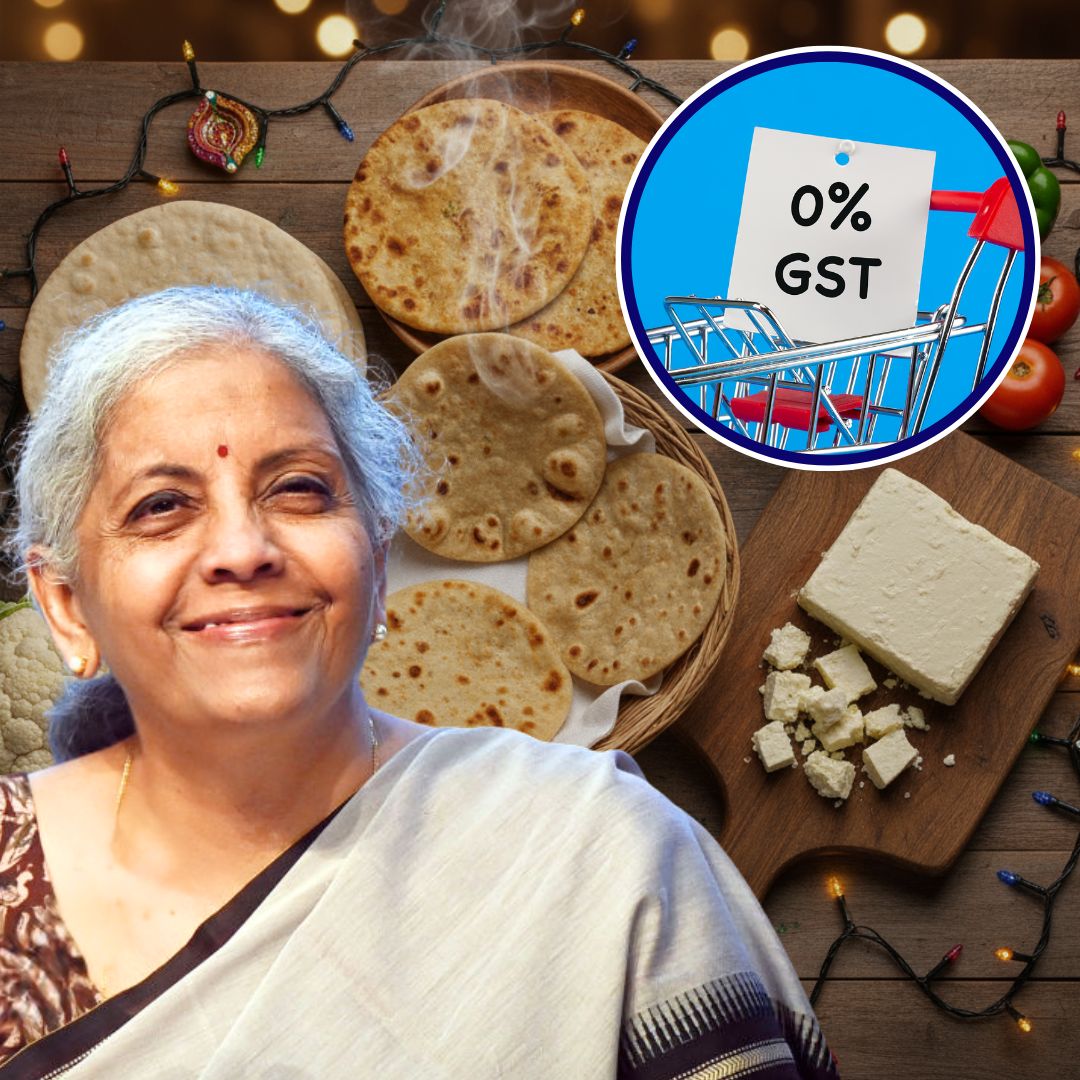India’s Goods and Services Tax (GST) system enters a new era from September 22, 2025, with the rollout of GST 2.0, a major reform aimed at simplifying taxation, reducing the burden on consumers, and boosting economic growth.
Launched after the 56th GST Council meeting led by Finance Minister Nirmala Sitharaman, GST 2.0 replaces the previous four-tier slab system with a more straightforward structure: essentials mostly attract a 5% or zero rate, most other goods and services fall under 18%, and sin and luxury items are taxed at 40%. This overhaul also brings simplified return filing, faster refunds, and enhanced compliance ease, promising relief just before the festive season.
Zero GST on Multiple Daily Essentials from September 22
Starting today, several everyday household items have become entirely exempt from GST, making them more affordable for consumers across India. Pre-packed and labelled paneer, ultra-high temperature (UHT) milk, and pizza bread now attract a zero tax rate. Additionally, staple Indian breads including khakhra, chapati, roti, paratha, kulcha, and regular bread are fully GST exempt, easing grocery bills for families.
Fresh fruits, vegetables, pulses, eggs, wheat flour, and salt remain tax-free, while processed food items see rationalised rates. Officials from the Finance Ministry emphasise that these tax breaks are designed to empower the common man by reducing essential costs, supporting farmers and MSMEs, and fostering inclusive growth.
- Pre-packed and labelled paneer
- Ultra-High Temperature (UHT) milk
- Pizza bread
- Common Indian breads: khakhra, chapati, roti, paratha, kulcha, and bread
- Fresh fruits and vegetables
- Pulses and dals
- Wheat flour and rice
- Eggs
- Milk (other than UHT)
- Salt
- Life and health insurance premiums
- 33 life-saving medicines and medical-grade oxygen
- Stationery items such as sharpeners, crayons, notebooks, pencils, and erasers
These items were earlier taxed at varying rates (5%, 12%, or 18%), but now attract a zero GST rate, reducing prices for consumers and easing the cost of living, especially for low and middle-income families.
This zero tax on staples and essential commodities is part of the government’s effort under GST 2.0 to simplify the tax structure, support affordable nutrition, and promote equitable economic growth.
Simplified GST Framework to Boost Consumption and Ease Compliance
GST 2.0 introduces two primary tax slabs of 5% for essentials and 18% for other goods and services, plus a 40% slab targeting luxury and sin goods, replacing the complex previous setup with 5%, 12%, 18%, and 28% rates. The government’s goal is to simplify the tax environment, close loopholes, and prevent the inverted duty structure that previously burdened the supply chain.
Life and health insurance premiums are among other areas enjoying full GST exemption, supporting financial security. Businesses, especially MSMEs, will benefit from eased digital compliance and faster input tax credit (ITC) processes, which are expected to drive manufacturing and consumption growth, crucial for India’s economic revival.
The Logical Indian’s Perspective
The GST 2.0 reforms mark a significant step toward making taxation more equitable and transparent, reflecting a governance approach centered on empathy and fairness. The Logical Indian welcomes this move to lighten the financial load on households and simplify compliance for businesses, echoing the values of social justice and economic inclusivity.
Affordable access to nutritious staples like paneer and staples under GST exemption promise to improve living standards, especially for vulnerable communities.












